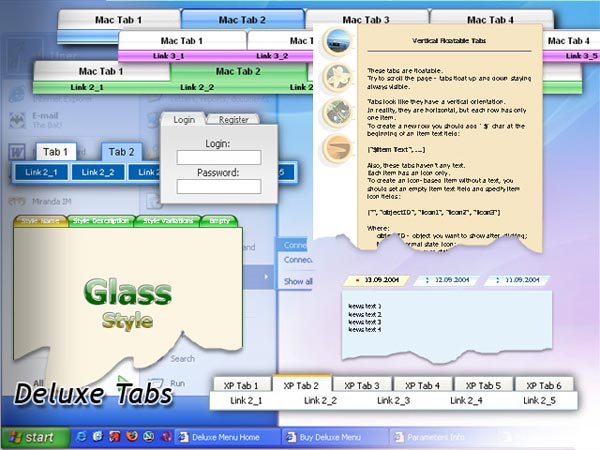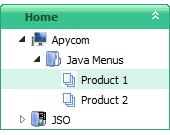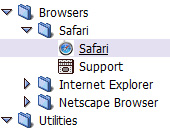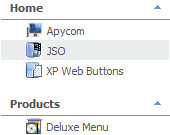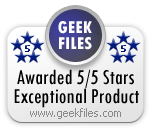Template: Javascript High Performance Tree Menu
Vista Style 5 Dhtml Tree Menu
The template emulates Vista OS menu style. To open submenus click on menu items.
The appearence of this template is determined by the following parameters:
- The menu have XP Style; Animation effect for subitems
- Toggle-mode support.
- Items have icons
- Menu has a static position and is placed within the table cell
The template emulates Vista OS menu style. To open submenus click on menu items.
The appearence of this template is determined by the following parameters:
- The menu have XP Style; Animation effect for subitems
- Toggle-mode support.
- Items have icons
- Menu has a static position and is placed within the table cell
Key features:
- 3-state icons for each item
- Each item can have individual settings
- different speed for an animation for submenus
- Status string shows item labels
- Relative/Absolute menu position
- Unlimited number of sub levels
- Submenus have a fade effect
- Several menus on one page
- 3-state icons for each item
- Each item can have individual settings
- different speed for an animation for submenus
- Status string shows item labels
- Relative/Absolute menu position
- Unlimited number of sub levels
- Submenus have a fade effect
- Several menus on one page

